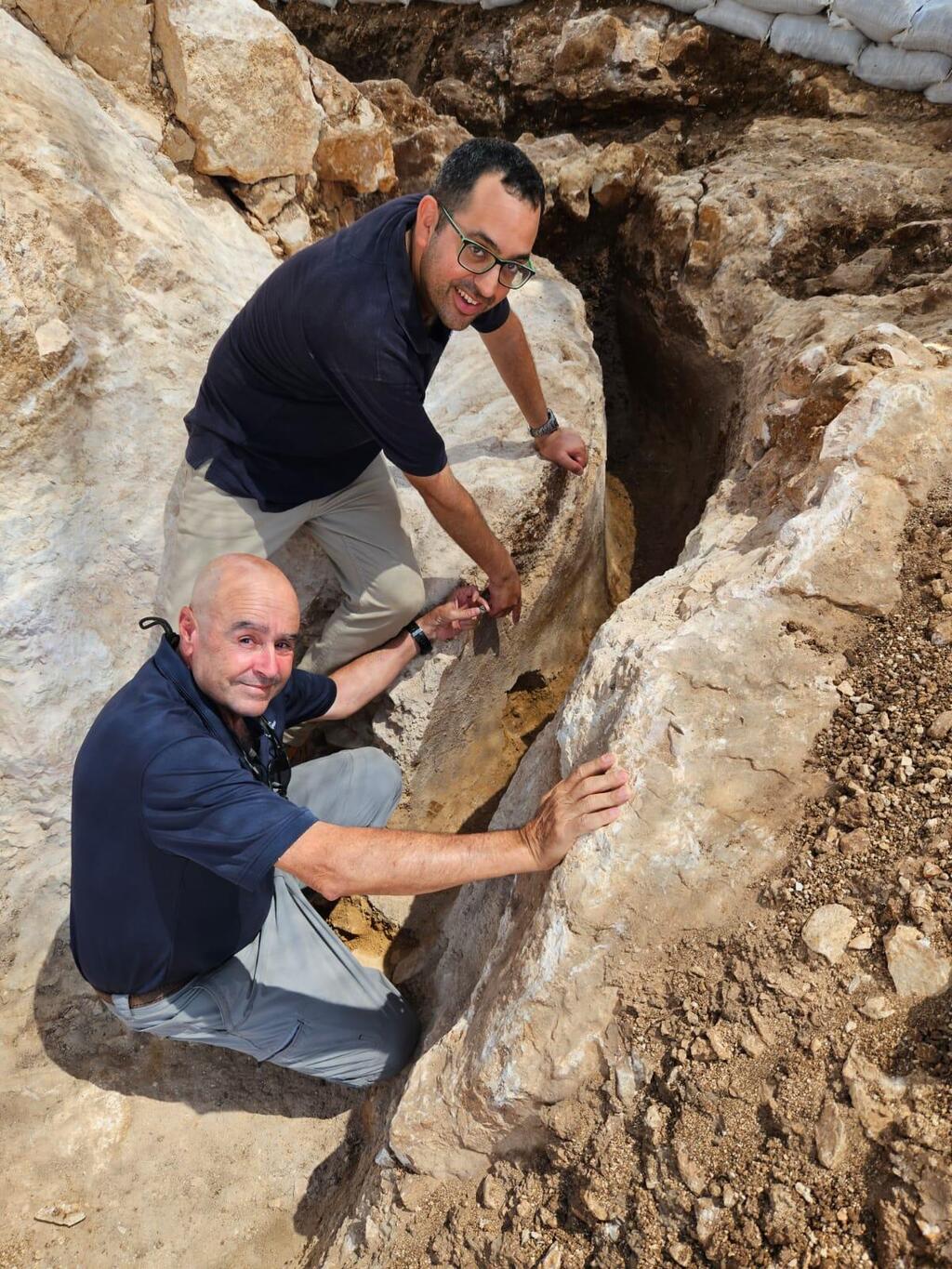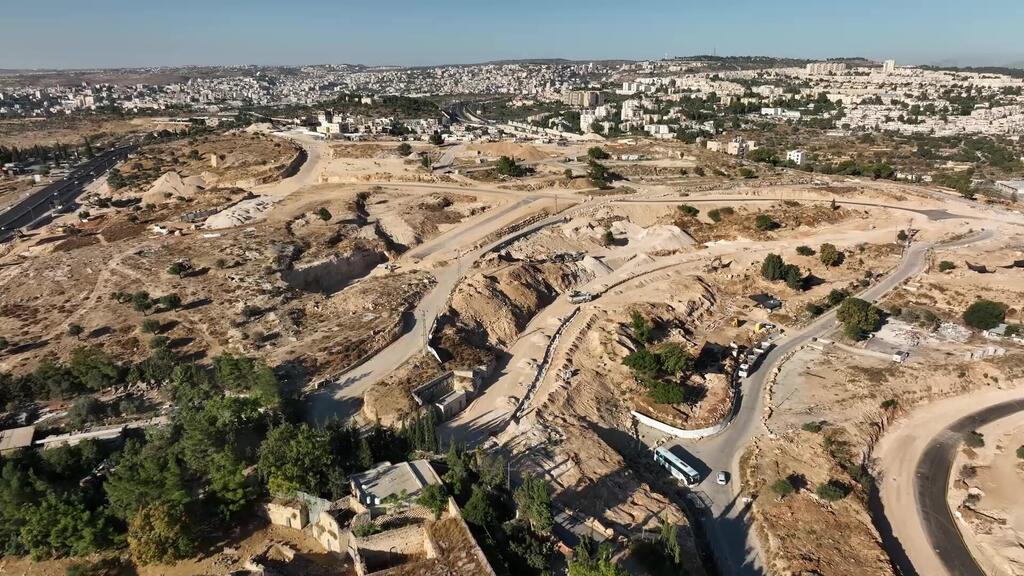The longest section of Jerusalem’s ancient Upper Aqueduct was revealed during archaeological excavations on the outskirts of the Givat HaMatos neighborhood. Archeologists uncovered approximately 300 meters of the aqueduct, which carried water to Jerusalem’s Upper City, where Herod's palace and the houses of the city's elite stood some 2,000 years ago.
JERUSALEM AQUEDUCT REVEALING ANCIENT HISTORY
(iltv)
More stories:
"At the height of the Second Temple period, Jerusalem experienced significant growth. The Temple was rebuilt, and water that flowed from springs and wells in the area was no longer sufficient for the thousands of pilgrims and residents. Water needed to be brought to the city from distant sources," explained Dr. Ofer Sion and Rotem Cohen, who were in charge of the excavation by the Israel Antiquities Authority.
5 View gallery
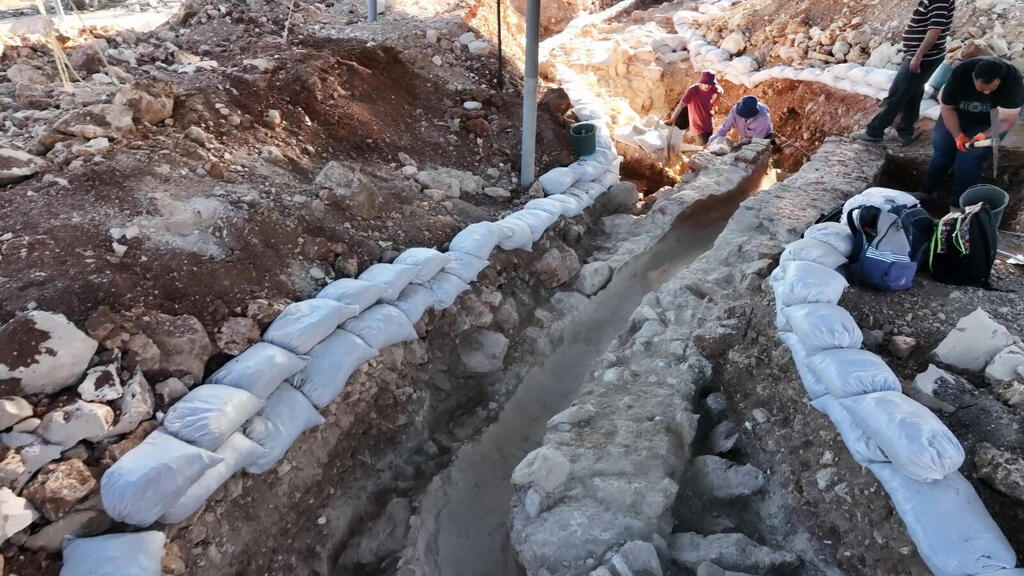

Part of the uncovered aqueduct in Jerusalem
(Photo: Emil Aljem, Israel Antiquities Authority)
"As a result, the Hasmoneans and King Herod constructed two complex aqueducts leading water to Jerusalem. These were among the largest and most elaborate water systems in ancient Israel, and in the ancient world as a whole," they added.
The Israel Antiquities Authority explained that the aqueducts collected water from springs in the Bethlehem region. Using massive reservoirs, physical laws, topography and an extraordinary technological ability, the water was directed across dozens of kilometers until it reached Jerusalem.
The Upper Aqueduct, a section of which has now been exposed for hundreds of meters, carried water to the Upper City (today's Jewish and Armenian quarters), while the Lower Aqueduct led water directly to the Temple Mount.
The Upper Aqueduct, a portion of which has now been revealed, continued to serve even after Jerusalem’s destruction in 70 CE. The Roman Legio X Fretensis (10th legion), which destroyed the Temple, established itself in the Upper City and set up a camp there. "The 10th Legion continued to utilize the sophisticated aqueduct even after the establishment of the pagan city 'Aelia Capitolina,'," the Israel Antiquities Authority explained.
The authority added that the Romans carried out extensive renovations on the aqueduct. "They raised the original level by about half a meter," said Sion and Cohen. "In the aqueduct’s foundations, dating to the days of the 10th Legion, we found around 25 coins scattered over relatively equal distances. In our opinion, this was not coincidental: much like today's custom, the coins were placed there as a way to wish for good fortune."
5 View gallery
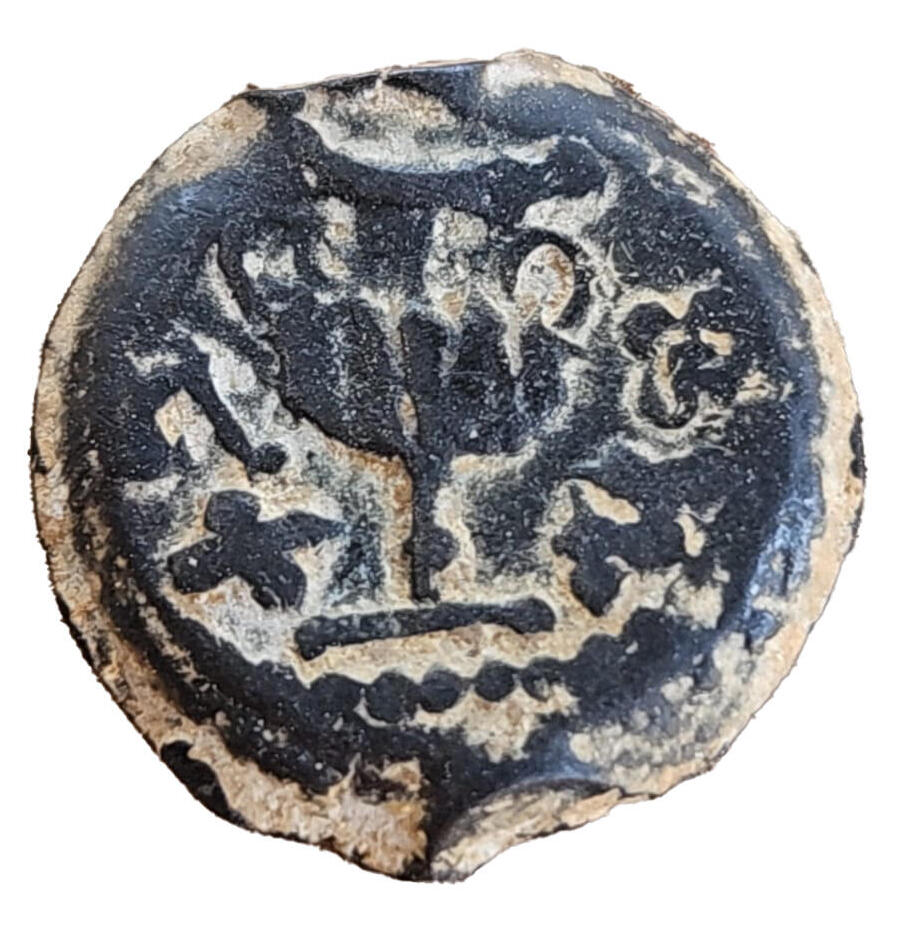

Coin from the Jewish revolt found in the aqueduct
(Photo: Ofer Sion, Israel Antiquities Authority)
In the Upper Aqueduct, a coin from the Great Jewish Revolt against the Romans was also found, dating to 67-68 CE. The researchers believe that the builders of the Upper Aqueduct intentionally embedded this coin in the direction of the aqueduct's foundations when they laid the plaster.
“The unearthing of the Upper Aqueduct and 25 coins buried within it, may, for the first time, allow for an absolute dating of the various stages of the construction of Jerusalem's waterways and possibly shed light on who originally constructed the edifice: the Hasmoneans or perhaps King Herod," the researchers explained.
5 View gallery
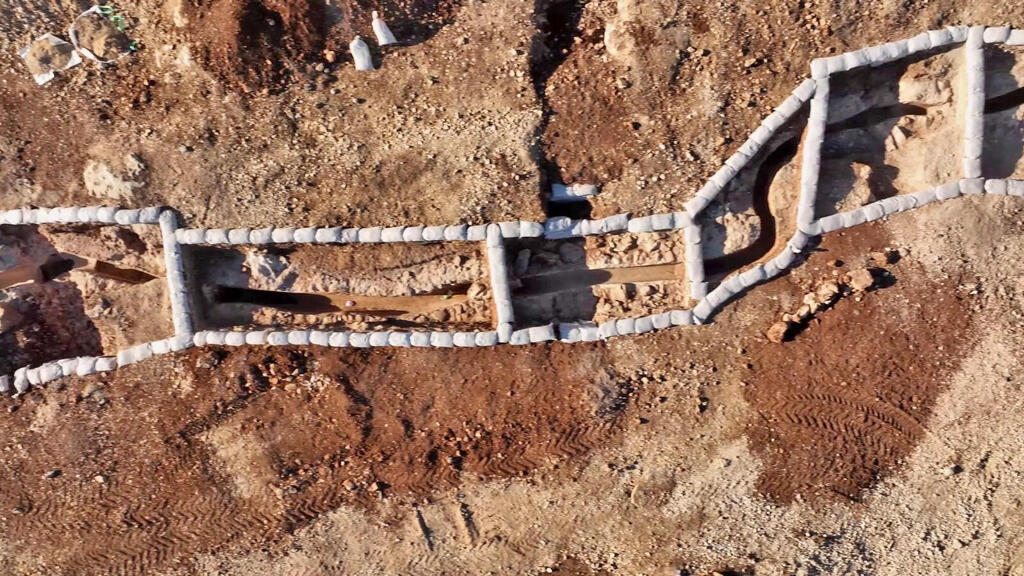

The ancient aqueduct as seen from the air
(Photo: Emil Aljem, Israel Antiquities Authority)
The Israel Antiquities Authority added that the section of the Upper Aqueduct currently being uncovered was buried beneath layers of modern soil debris. The aqueduct followed a convenient and moderate topographical course and, so far, three distinct phases have been discerned in it: the lower two phases - from the late Second Temple period, and the upper phase - from the time of the 10th Roman Legion in Israel.
The authority further added that the construction present on the ancient building was very high, the aqueduct plaster was well-coated, and the embankments were raised. In some cases, the aqueduct was constructed where earlier phases had collapsed, on foundations extending three meters high.
"The aqueducts to Jerusalem tell the city’s story. Their construction required enormous budgets, extensive engineering knowledge, and daily operations. They tell of the glory days of the Temple, the city’s destruction, and its reconstruction after the Jewish revolt, as well as during its days as Aelia Capitolina - a pagan city,” Eli Eskozido, director of the Israel Antiquities Authority, said of the find.
“Due to this discovery’s importance, which has not been preserved to such an extent in other places, and in cooperation with the Jerusalem Municipality, we hope that it can be preserved and presented for the visiting public," he added.




